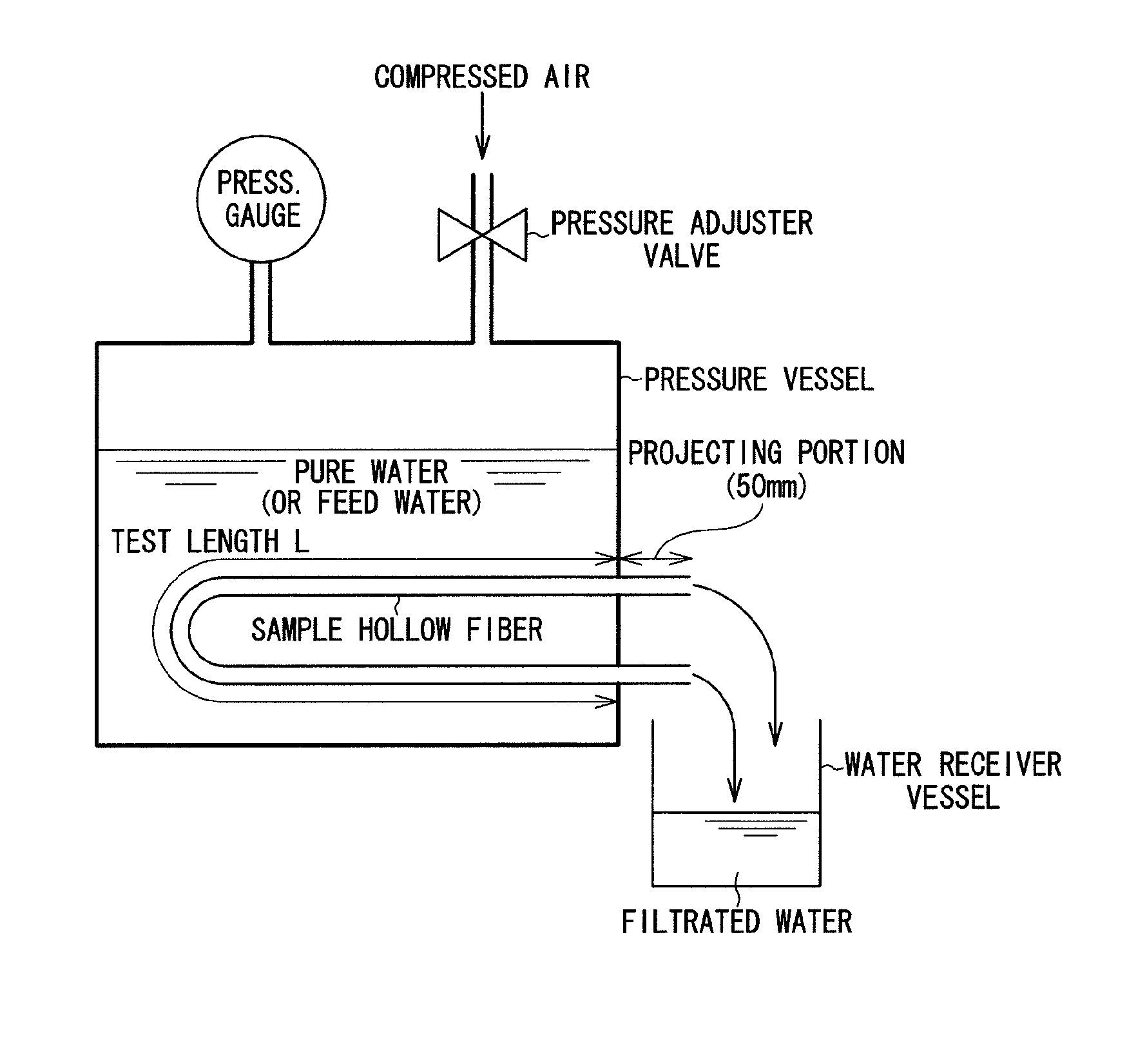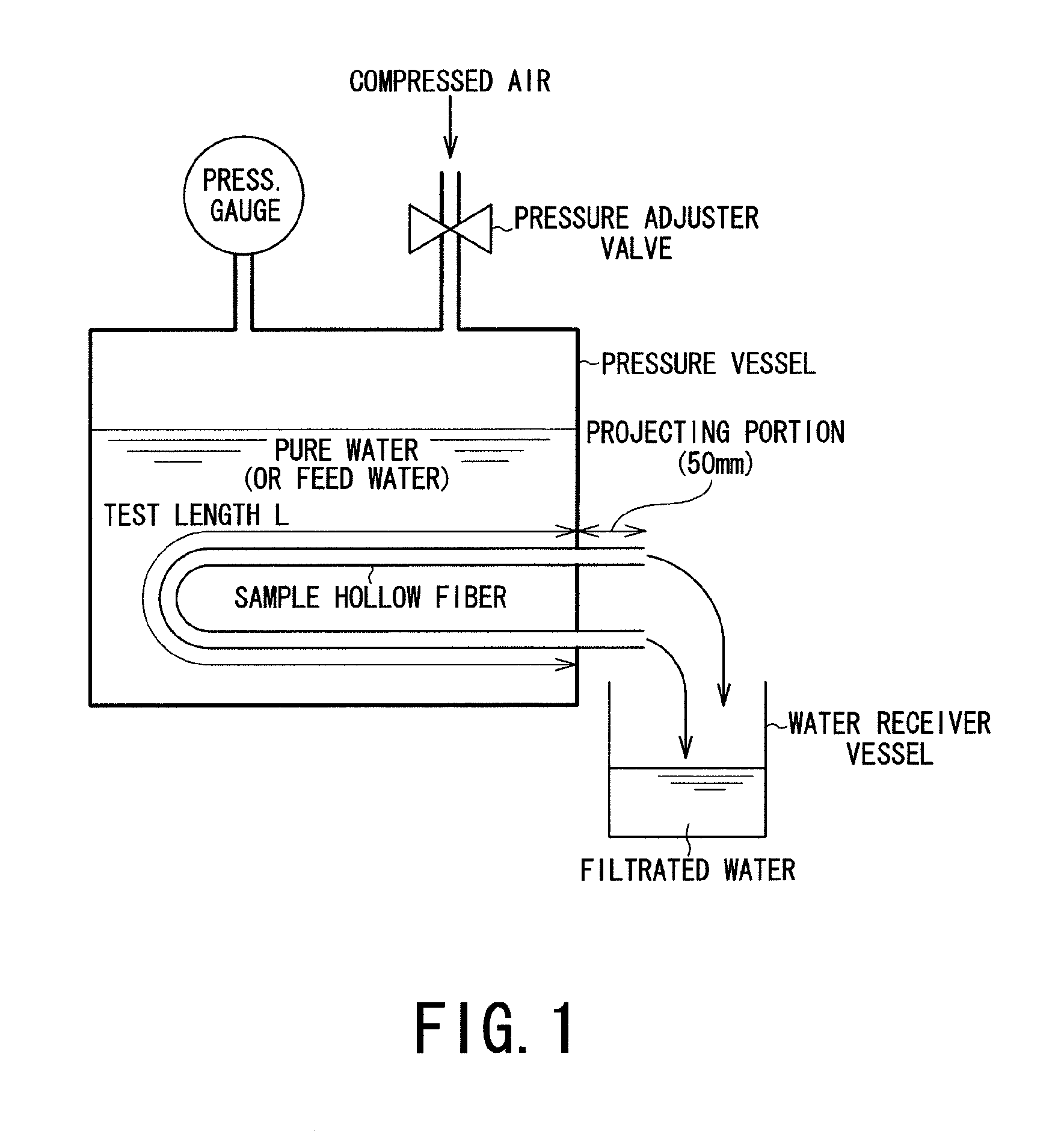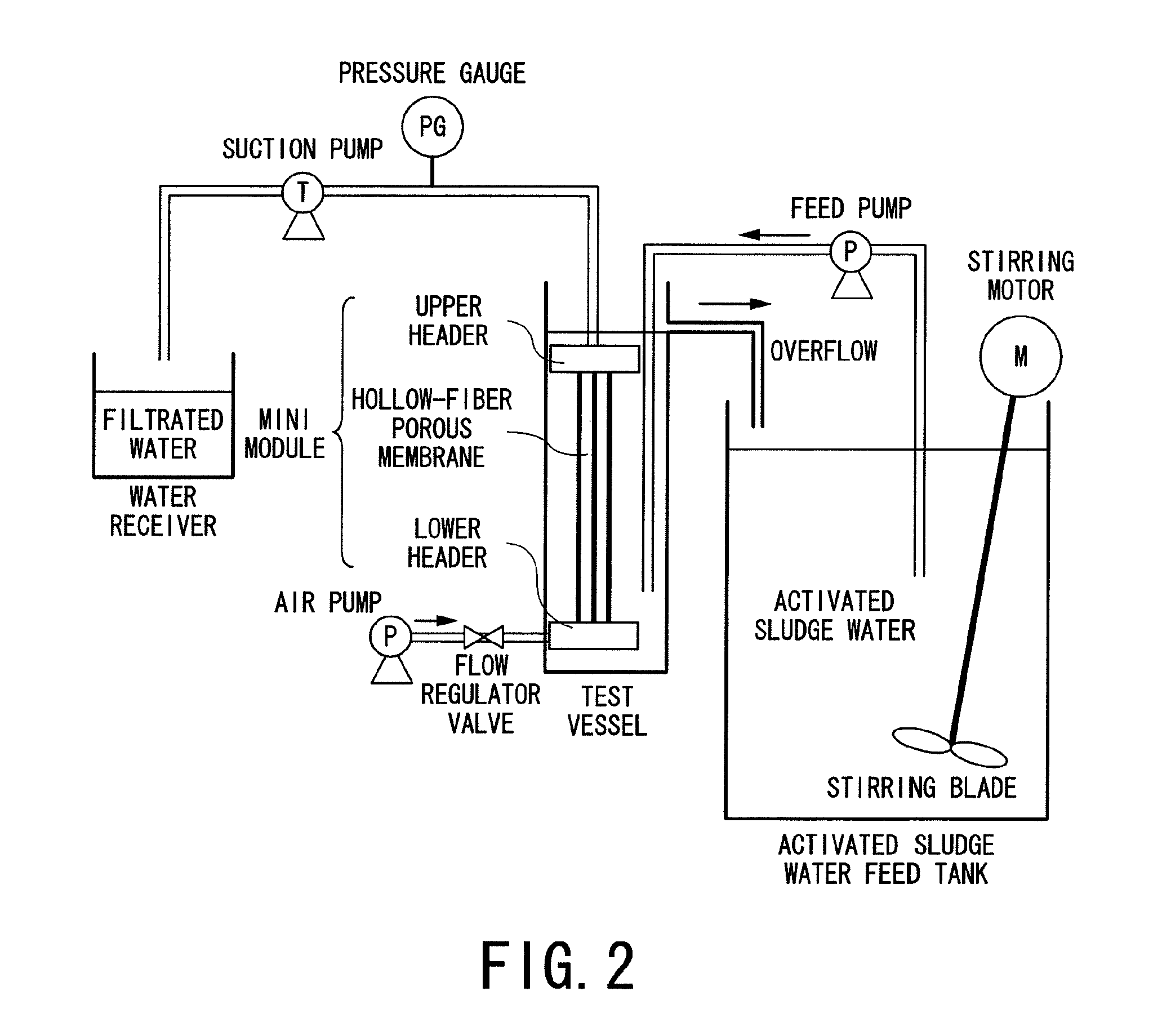Vinylidene fluoride resin porous membrane, manufacturing method therefor, and method for manufacturing filtrate water
a technology of vinyl fluoride resin and porous membrane, which is applied in the direction of membranes, filtration separation, separation processes, etc., can solve the problems of unreachable essential solution, increased water filtration pressure due to clogging, and excessive pore size, and achieve good liquid permeation rate maintenance performance
- Summary
- Abstract
- Description
- Claims
- Application Information
AI Technical Summary
Benefits of technology
Problems solved by technology
Method used
Image
Examples
example 1
[0157]The outer surface of the membrane after the 24-hour filtration according to the MBR process was observed through a SEM (5000 times), whereby open pores were observed on the entire surface and no cake was observed.
[0158]When the membrane after the MBR process was subjected to the CIP processing, the reverse washing pressure difference reached 5 minutes after the start of the processing, and then suction filtration was resumed again to show a pressure difference recovery rate of 0.98 so that the CIP recovery time was determined to be 5 minutes.
PUM
| Property | Measurement | Unit |
|---|---|---|
| surface pore size | aaaaa | aaaaa |
| diameter | aaaaa | aaaaa |
| thickness | aaaaa | aaaaa |
Abstract
Description
Claims
Application Information
 Login to View More
Login to View More - R&D
- Intellectual Property
- Life Sciences
- Materials
- Tech Scout
- Unparalleled Data Quality
- Higher Quality Content
- 60% Fewer Hallucinations
Browse by: Latest US Patents, China's latest patents, Technical Efficacy Thesaurus, Application Domain, Technology Topic, Popular Technical Reports.
© 2025 PatSnap. All rights reserved.Legal|Privacy policy|Modern Slavery Act Transparency Statement|Sitemap|About US| Contact US: help@patsnap.com



